Running is more than just moving your feet—it’s about taking care of yourself too. It’s not just about having the guts to go the extra mile; it’s also about self-care before and after the run. Being a great runner isn’t just about passion; it requires proper athletic gear, a healthy diet, and smart training. With the right compression socks for running, you might find that your performance is enhanced, and recovery is streamlined.
So, it’s sock test time! Let’s lace up and see if these compression socks actually live up to the hype.
Introduction to Compression Socks for Running
Have you seen all the hype about those squiggly compression socks everyone’s wearing, especially runners? Turns out, they squeeze your calves, which helps blood flow better. Runners say this makes running easier and helps them bounce back faster.

The Importance of Proper Gear in Running
Lots of people are experimenting with specialized compression socks for running, which apply pressure to the feet and lower legs. They say that it improves their running performance and reduces discomfort. So, let’s delve into why compression socks are good for running.
What Are Compression Socks?
Think of compression socks as cozy hugs for your legs. They gently compress your ankle, gradually loosening as they go up, promoting better blood flow and helping in exercise recovery. This can mean fewer sore spots and faster recovery after your intense run.
Now, let’s see what makes these compression socks special compared to your regular socks.
Materials That Matter
Compression socks aren’t your average socks. Many of them are made from a mix of nylon and spandex blend, which helps to keep your legs comfy and dry while running. They also offer the right stretch, so you can focus on your performance rather than your socks.
Different Types for Different Needs
Not all compression socks are the same. They are different types for different purposes, like chilling at home, crushing runs, or taking long trips. Each type has its particular stretchy material and unique benefits to support you. So, whether you want comfy feet all day, or extra leg support during runs, there’s a perfect pair waiting for you.
Benefits of Compression Socks for Running
There are numerous advantages to wearing compression gear, particularly compression socks while running. Let’s explore these benefits and understand why you should consider wearing compression socks for running.
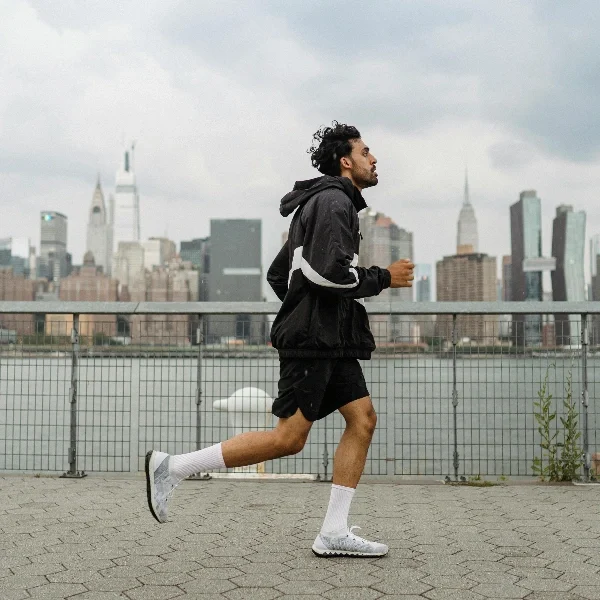
Improved Blood Circulation While Running Through Compression Socks
More oxygen and nutrients: Improved blood flow = happy muscles! Wearing compression stockings helps the blood zoom around more; giving your muscles all the good stuff they need (like oxygen and food!).
By improving circulation, compression socks for runners help reduce the strain on the veins, lower the likelihood of blood clot formation, and alleviate symptoms associated with serious conditions such as varicose veins and deep vein thrombosis. This means compression socks work not only for your athletic performance but also safeguard your vascular health.
Reduced Muscle Fatigue and Soreness
Flushing out waste: After a brutal workout, your muscles feel yucky with stuff they don’t need, such as lactic acid. Compression socks help flush out waste products more efficiently post-workout. This can reduce muscle soreness and speed up recovery, allowing you to bounce back faster.
Enhanced Performance and Recovery
Some studies suggest that compression socks could enhance your running performance. Here’s the lowdown:
Feeling less tired: Runners are abuzz about these compression socks. They claim that it makes running feel easier, as if their muscles are receiving an extra boost of oxygen and ditching waste more rapidly.
Do Compression Socks Really Work for Running?
Turns out, these compression socks might not just be a fad! Lots of research suggests they could help you run better. Forget fashion statements, they could be a serious game-changer for your runs.
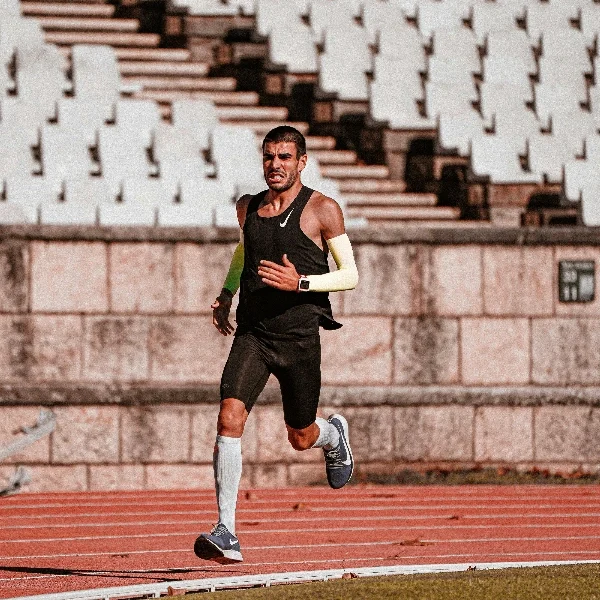
The Science Behind Compression Sock
Studies say compression socks boost blood flow, deliver more oxygen to your muscles, and even help clear out yucky stuff faster. This could mean comfier, smoother runs – way more than just a fancy accessory.
Testimonials from Runners
Beyond the scientific terminology, the running community is buzzing with positive reviews about these unique compression socks. Runners claim that they enable them to cover greater distances, recover quickly, and feel less fatigued after their intense runs. The advantage of enhanced blood flow and circulation offered by compression socks appears to be a significant factor. There’s more to these compression socks than just their aesthetic appeal.
How to Choose the Best Compression Socks for Running
With so many compression socks to choose from, finding the right pair can be really overwhelming. Next, we will explore how to choose a pair of compression socks that fits you perfectly for running.

Factors to Consider
Here’s a simple guide to picking the perfect pair of compression socks for your runs.
Compression Socks Types
Compression socks come in different heights, and each kind has its perks:
- Ankle Compression Socks: These are the shortest option, offering light compression, and these give your ankles a gentle hug. Perfect for hot days or when you need your feet to move freely.
- Calf Compression Socks: These are champions for comfort. They reach your mid-calfs and give your legs a gentle hug, just enough to keep you feeling supported and energized while running. They promote blood circulation and reduce muscle fatigue.
- Knee-High Compression Socks: These knee-high socks are like leggings for your feet! They hug your whole lower leg, from your toes all the way up to your shins, keeping you warm and comfy during your run.
Plus, they give your calves some extra support, helping you perform better.
While all types of compression socks have their advantages, both Calf Compression Socks and Knee-High Compression Socks are particularly suitable for running. They will help to support and enhance circulation. However, the best type for you may depend on your personal preferences and needs, so it’s a good idea to try out different types to find the perfect fit for your runs.
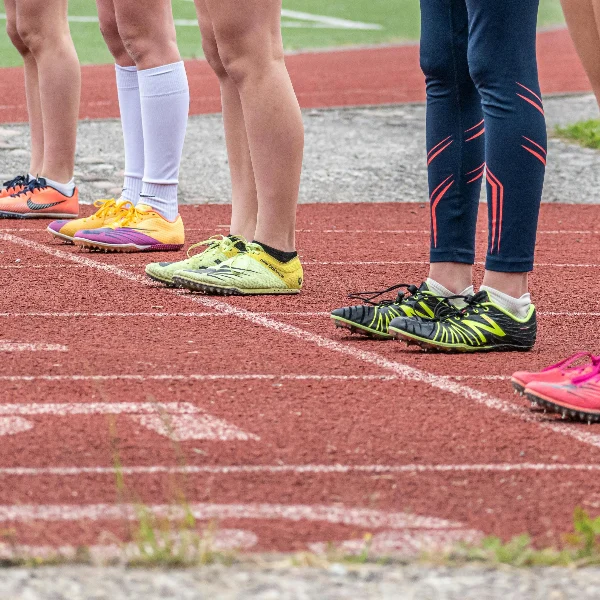
The Perfect Fit
Wearing compression socks during your runs with the wrong size can be a total drag that cuts off circulation and makes your legs grumpy. Getting the right fit with the required compression rating is super easy. Just grab the brand’s size chart and measure your legs carefully.
Compression Levels Decoded
These socks come in different compression ratings and levels of tightness, usually measured in mmHg (millimeters of mercury).
- Mild (8-15 mmHg): Light compression socks are your friend. They boost circulation, fight pain, and help your legs recover faster.
- Moderate (15-20 mmHg): Medium compression socks could be your secret weapon. They help your muscles work better, fight fatigue, and bounce back faster.
- Firm (20-30 mmHg): Super strong compression socks are for folks with special needs like varicose veins or weak muscles.
Picking the right level is key to maximizing the benefits and having a comfy run. For running, the suitable compression levels typically range from 15-20 mmHg or 20-30 mmHg. These levels of compression socks can provide adequate support and pressure, help to enhance performance, reduce muscle fatigue, and promote recovery. However, the specific choice should also be determined based on individual health conditions and needs. So, it’s advisable to consult a professional before making a selection.
When and How Long to Wear Compression Socks for Running
To optimize the benefits of wearing compression socks for running, consider the timing and duration of usage, as these are crucial factors:
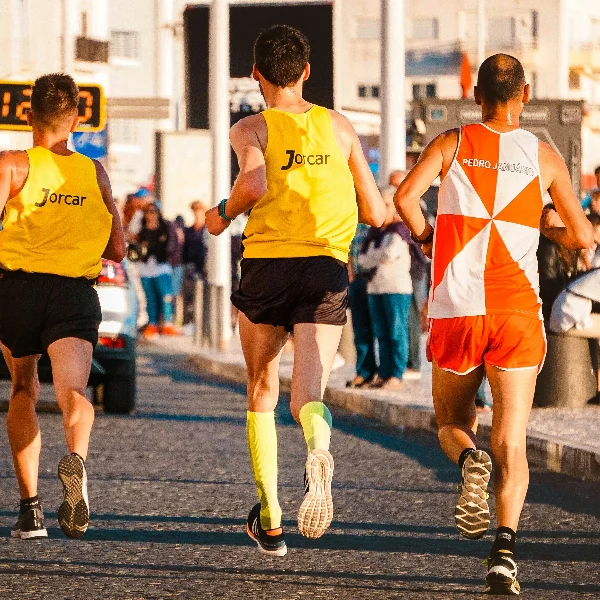
Timing and Duration
Before: Wearing compression socks before your run can help warm up your legs and prepare them for the activity ahead.
During: Some runners believe that wearing compression socks during their run can enhance blood circulation, which could be beneficial for their legs.
After: Compression socks post-run could speed up muscle recovery, helping your muscles bounce back faster and leaving you feeling fresh and ready for the next adventure.
Personalizing Your Usage
Experiment with different compression socks lengths and how long you wear them to find the perfect combo for your feet and running routines.
Tips for Running by Wearing Compression Socks
Now that you’ve got your awesome compression socks, here’s how to unlock their full potential!
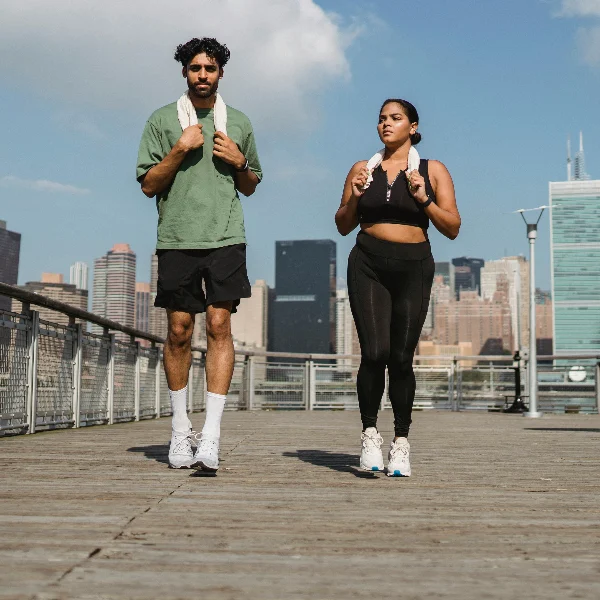
Introducing Compression Socks to Your Routine
If you’re new to running in to wear compression socks, start with shorter runs and gradually increase the distance as your body gets used to the extra hug. Happy feet, happy runs.
Proper Care and Maintenance
Start slow: Start with short runs in your new compression socks, letting your body get comfy with the snugness before tackling longer distances.
Proper care: Follow the manufacturer’s washing guide to keep your compression socks happy and healthy.
Conclusion
Choosing the right compression socks can take your runs to the next level. Remember, the most important thing is to experiment and find what works best for you. Listen to your body, try different sock lengths and wear times, and don’t be afraid to explore different brands. With a little research and some trial runs, you’ll find the perfect pair to keep your legs happy and your runs feeling awesome.

🧐FAQs about Why You Need to Wear Compression Socks for Running
1. Why should I run in compression socks?
Think of compression socks as your personal cheerleaders, boosting circulation to ensure your muscles are well-fed with oxygen and nutrients. This can help you run longer, reduce muscle fatigue, and generally amp up your exercise performance.
2. How do I wear compression socks for running?
To get the most out of your compression socks, make sure they fit snugly around your feet and calves without feeling too tight. They should be smooth without any folds to keep your blood flowing freely.
3. Can these socks help me reduce muscle pain, soreness, and fatigue?
Absolutely! By boosting blood circulation and reducing muscle vibration, compression socks can help minimize soreness and fatigue, speeding up your recovery after those long runs.
4. How do I choose the right compression level for me?
Compression socks come in all shapes and sizes, from mild to extra firm. For running, most athletes do well with moderate compression (20-30 mmHg). However, it’s always a good idea to chat with a professional to find your perfect fit and get compression measured.
5. Are these socks suitable for long-distance running?
Yes indeed! Long-distance runners can particularly benefit from graduated compression stockings. These specialized socks, along with compression sleeves, help boost blood circulation, reduce muscle movement, and decrease swelling risks, all of which can enhance your endurance and recovery times.
6. How do I care for my compression socks?
Like any compression clothing, to keep your socks in tip-top shape, wash them in cold water either by hand or on a gentle cycle, and let them air dry. Steer clear of bleach and fabric softeners to make them last longer.



